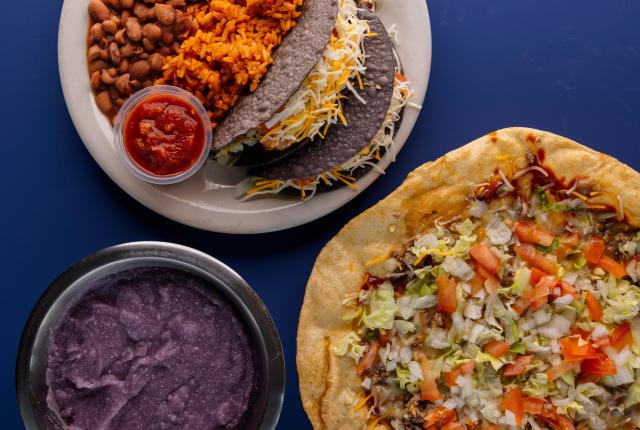EVERY NEW MEXICAN KNOWS OF FRYBREAD. Its duality is novel: sweet and salty flavors, soft and crispy textures that melt on the tongue and get chewy between the teeth. It is a female food—supple, warm, and round—and a survival food that is inseparable from a people who know survival as much as any. Its ingredients are simple: oil, wheat flour, baking powder, salt, and milk. They are European ingredients, but this is an Indigenous food.
As a Diné person, I’m told the origin of this staple was created out of hardship at the place we call Hwéeldi, or Place of Suffering, where we were interned at Bosque Redondo. There, we were given the ingredients for a White man’s survival. Although I am unable to tell you which Indigenous woman was the first to mix these rations together and create a food that would become iconic to Native Americans across the continent, I do know that—perhaps via divine synchronicity—women with indestructible spirits existing in unimaginable conditions were tasked with the obligation of survival and a sacred responsibility to feed the people. So they made something out of virtually nothing. They created a food that continues to nourish the ancestors of those people and thousands more.
You can put just about anything on a piece of frybread and delight your taste buds. Some say it was a Navajo man—a restaurant owner—who first decided to top it with beans, meat, chile, shredded cheese, lettuce, diced tomato, and onions. But whoever continued the frybread legacy, they invented a taco that is now a staple of Indian Country in general and New Mexico in particular.
It is no longer a Navajo dish, but something we share across all nations. The Indigenous Taco is ours, and better known on the streets as an “Ind’in taco” (or NDN taco). It’s OK, we can all say it. Just make sure you have cash in hand, because these delicacies are not easy to make. That’s why every family has a carefully guarded recipe.
The chefs willing to impart their secrets will tell you that toppings on an Ind’in taco are secondary to the creation of its base. Without good frybread, you can’t expect a good taco.
Ray Naranjo, owner of Manko, an Española Indigenous food truck, is no exception. His Frybread Fridays special is a huge part of his success. Using his grandmother’s recipe, Naranjo (Santa Clara Pueblo/descendant of the Little Traverse Bay Band of Odawa Indians in Michigan) is bringing his taco legacy to the masses.
He uses Cortez Milling Company’s Blue Bird Flour “based on feeling and texture,” he says. When his refrigerator went out last spring, Naranjo decided to put frybread tacos on Manko’s menu. “I scraped together enough cash to purchase an industrial tabletop dough roller that I put to use with that recipe I learned so long ago,” he recalls. “I created a Straight from the Rez Menu that can produce frybread on a massive scale with limited effort. It was The Day Frybread Saved Manko!”
A Jemez Pueblo–owned and Albuquerque-based eatery called Itality takes a different approach to the Indigenous taco game. Chef Tina Archuleta’s restaurant offers her Ital NDN taco, a wheat-and-blue-corn frybread topped with red chile beans, avocado, romaine, tomatoes, onions, and a drizzle of special pumpkinseed sauce. “It is made with intention and love, and you can taste that with every bite,” says Archuleta. “Itality’s goal has been to cultivate wellness in Indigenous communities with plant-based foods and education.” Her version proves that the Ind’in taco may continue to evolve and surprise, but this soul-satisfying dish is here to stay.



